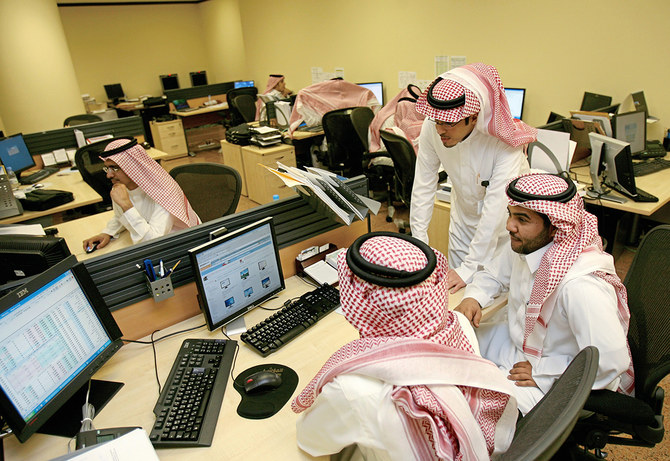RIYADH: The rate of Saudization in capital market institutions reached 77 percent in the third quarter of 2022, as the Kingdom steadily implemented its localization policy in line with the goals outlined in its Vision 2030, according to the latest data from the Capital Market Authority.
According to the CMA’s quarterly bulletin, nine capital market institutions which include Merak Capital, Razeen Capital, JOA Capital, Sadu Capital, Sadeed Financial, Mashoura Capital, Rawasi Advanced Investment, Afaq Capital and Jadara Investment reported 100 percent Saudization in the third quarter.
With over 155 employees, Alinma Invest succeeded in maintaining a Saudization rate of 95 percent, while SNB Capital and Riyad Capital each had 89 percent Saudi nationals in their workforce.
The CMA data further noted that the number of employees at capital market institutions stood at 5,100 by the end of the third quarter, denoting a quarter-on-quarter drop of nine employees.
According to the report, 4,014 males and 1,086 females were working in capital market institutions in Saudi Arabia by the end of September 2022.
It added that the total number of capital market institutions in the Kingdom reached 134 at the end of the third quarter. The total number of people working in companies licensed to exercise credit ratings in the third quarter was 68, with 38 percent Saudization, the report added.
The report went on to say that the Saudization rate in fintech companies in the Kingdom was 80 percent in the third quarter, with a total of 119 employees working in the booming sector.
Meanwhile, the total number of employees in market infrastructure companies stood at 169, and the Saudization rate was 90 percent by the end of the third quarter.
The Saudi nationalization scheme, Nitaqat, is a crucial step in increasing the contribution of local talent to the economy. In the third quarter, nine companies raised a total of SR20.30 million ($5.40 million) through equity crowdfunding, down from SR29.40 in the third quarter of the previous year, the report said.
The number of sukuk offered through investments in debt instrument firms was 52 valued at SR88.80 million.













